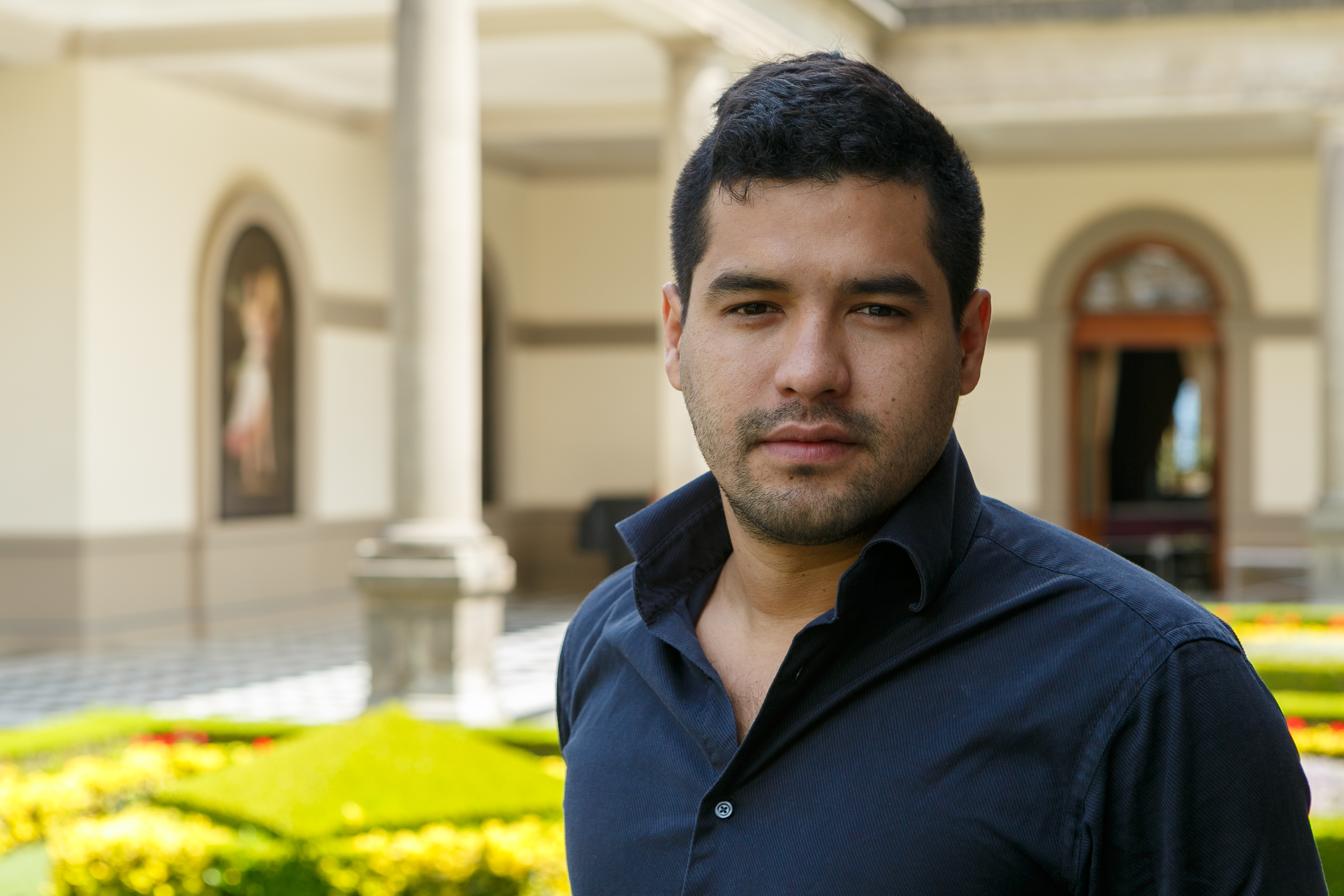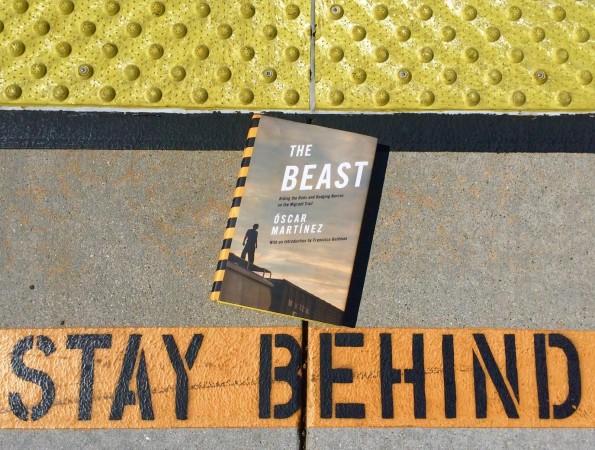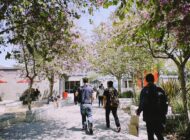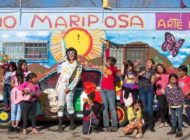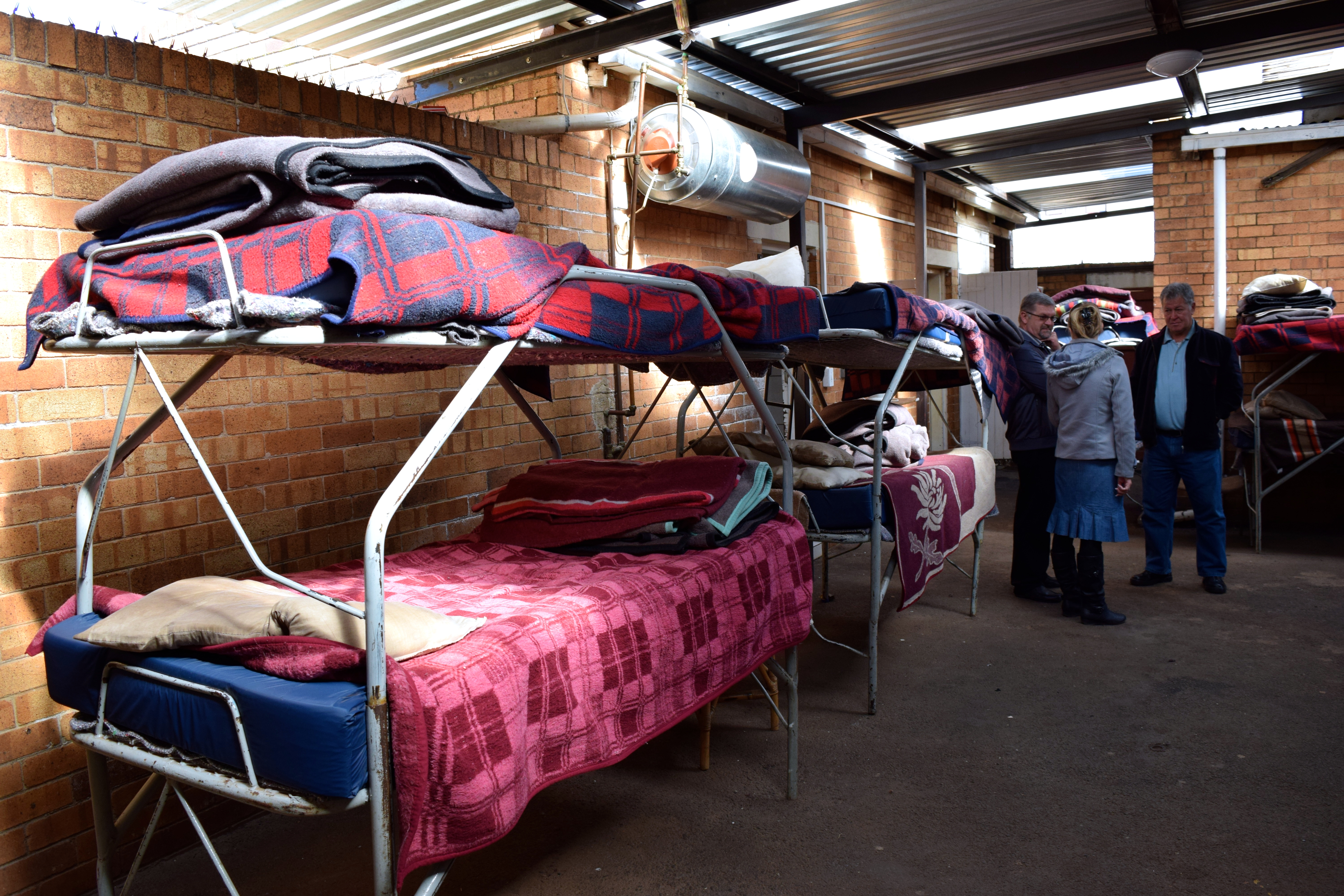“Óscar Martínez went where no other journalist from Mexico or elsewhere had gone, exploring the migrants’ routes, in a series of trips, from bottom to top, that take in not only the infamous train known as ‘La Bestia’––he rode the train eight times––but also the desolate byways traveled on foot where the very worst things happen.” —Francisco Goldman
By ZULAY SALDAÑA LÓPEZ
EL NUEVO SOL
The book “The Beast: Riding the Rails and Dodging Narcos on the Migrant Trail,” written by Salvadoran journalist Óscar Martínez, describes the harsh journey of more than 250,000 emigrants crossing through Mexico on their way to the United States every year. One of the trails Central American emigrants use to travel north through Mexico involves riding on top of a cargo train known as “La Bestia” or “the Beast.”
The beast appears to be a symbol of hope or salvation, but in reality it is a monster in disguise. One that can bring Central American emigrants to their death and even eat them alive.
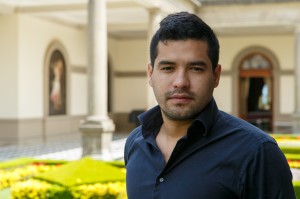 Martínez gives vivid descriptions of the dangers emigrants face when catching a ride on the beast. The beast is not a real animal, but it gulps down the lives of migrants or severely injures its prey.
Martínez gives vivid descriptions of the dangers emigrants face when catching a ride on the beast. The beast is not a real animal, but it gulps down the lives of migrants or severely injures its prey.
Through the many stories and descriptions that Martínez presents in the book, the reader is able to emotionally connect to the migrants and understand their struggle and determination to reach the U.S.
Martínez describes the horrible incidents that happen to those who make a wrong move when hopping on the train, or to those who fall asleep while the train is in motion.
In one incident, Wilber, a Honduran who guides migrants across Mexico on top of the train, tells the story of a man who got his leg chopped off by the wheel.
The emigrant could not lift himself up once he was already running. But he had enough time to see his chopped leg, think about it, and then put his head under the next wheel.
Martínez makes it clear that “the migrants trail” has not only been brutal but also full of institutional corruption because it’s, “everyone against everyone, emigrants caught in the middle.”
In the chapter on Ciudad Juárez, “Forbidden City: Chihuahua,” Martínez makes it clear that daily life in Mexico consists of fear, lockdown, taxation to drug pins and escaping — with Central American emigrants caught in the middle.
Central Americans migrating to the U.S have become a major commodity to drug cartels and Mexican security forces.
Organized crime in Mexico——with the collusion or direction of government authorities—–has found that kidnapping and extorting Central American emigrants is a more profitable business than extorting local business owners.
Martínez explains that “a kidnap [of] forty people, will pay between $300 and $1,500 in ransom money.”
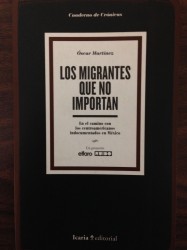 “The Beast” was first published in Spanish and bore the title “Los migrantes que no importan.” For the English translation the title could have translated to “The Migrants Who Don’t Matter” but instead the publisher decided to shift the importance of the train moving away from the passengers.
“The Beast” was first published in Spanish and bore the title “Los migrantes que no importan.” For the English translation the title could have translated to “The Migrants Who Don’t Matter” but instead the publisher decided to shift the importance of the train moving away from the passengers.
The translation was key to keeping the book vivid and alive, but it was still impossible to perfectly translate the different forms of speech used by Central American emigrants. Spanish in Central America and Mexico differs in vocabulary and grammar structure, with each region having a distinct slang and accent.
The translators, Daniel Maria Ugaz and John Washington, were still able to transform Martinez’s poetic descriptions into their English-language equivalents.
In “The Beast,” Martínez pays due respect to these Central American emigrants. He narrates poetically these invisible stories and in doing so he manages to give them back their humanity.
Central American emigrants escape the violence, poverty, corruption, and impunity in their own countries only to enter the same cycle in Mexico in their journey to the United States.
Violence does not discriminate.
According to El Salvador’s National Public Security Council, the recruitment of young children into gangs has dropped from 14 to 12 years old and the notorious Mara Salvatrucha gang recruits children as young as 8 or 9 years old.
The Women’s Refugee Commission’s report “Forced from Home” says that there a has been an influx of unaccompanied children migrating to the U.S beginning in October 2011. Children from Guatemala, Honduras and El Salvador report that “the growing influence of youth gangs and drug cartels are their primary reason for leaving.”
Children from Guatemala, Honduras and El Salvador confess that not only is the increase of recruitment by gangs and drug cartels their primary reason for leaving their country, but the fact that they are also targeted by police who make assumptions that all children are involved in gangs.
Children also migrate from all over the world for a number of reasons including to escape violence in their native countries and to reunite with family members.
One might ask why nothing is being done about the organized crime, the corruptions and the human trafficking, but as long as there is fear, its violence partner will never vanish.
“The Beast” digs deeper into the problem where the cycle of violence in Central America follows the emigrants through México in their process of reaching the United States.
Video by Culture/Strike
Listen to an interview (Spanish/English) with Óscar Martínez for Alt.Latino:
Riding ‘The Beast’: Alt.Latino Interviews Salvadoran Journalist Óscar Martínez.
Tags: book review border violence Central Americans CSUN drug violence economic violence El Faro Los migrantes que no importan Óscar Martínez The Beast






